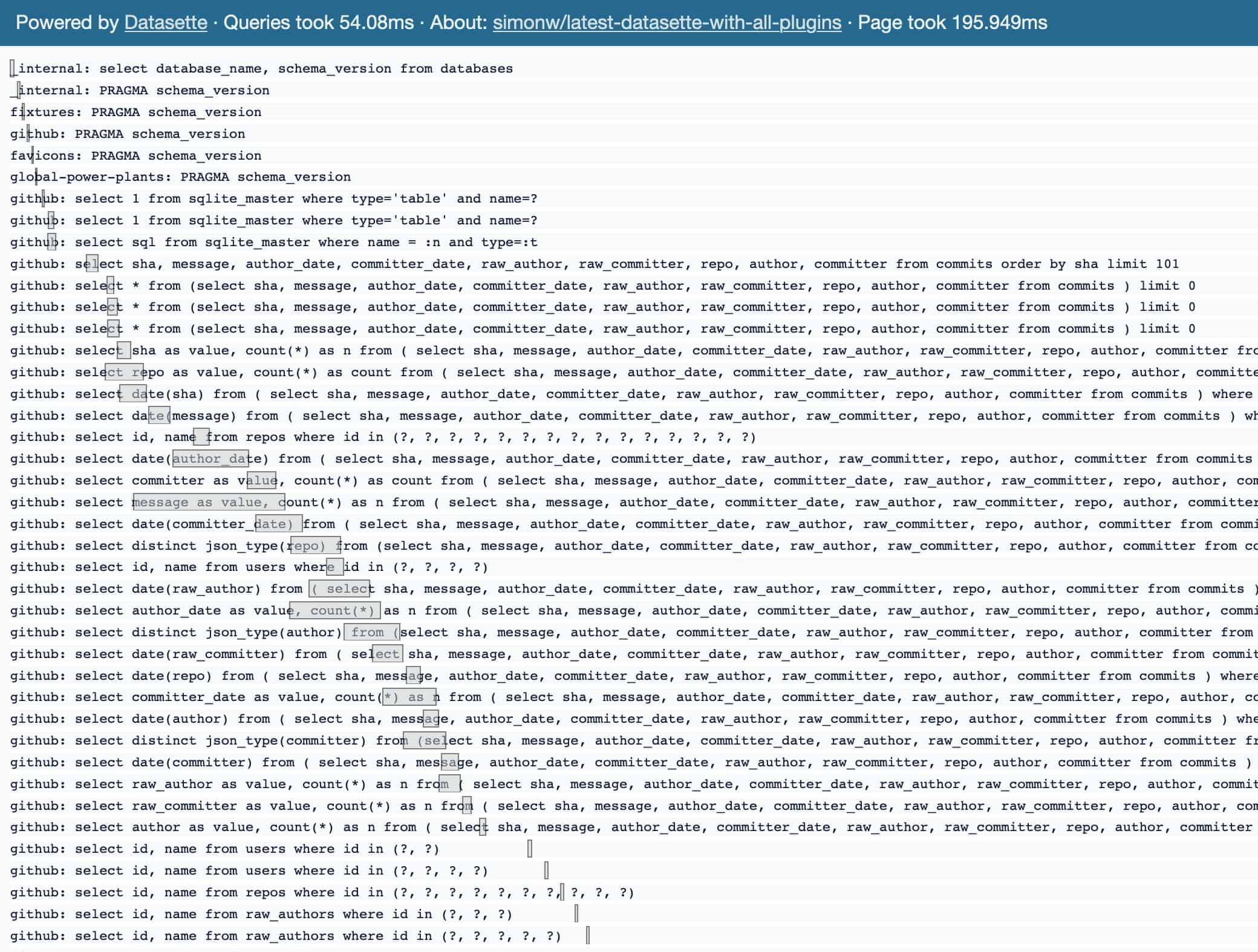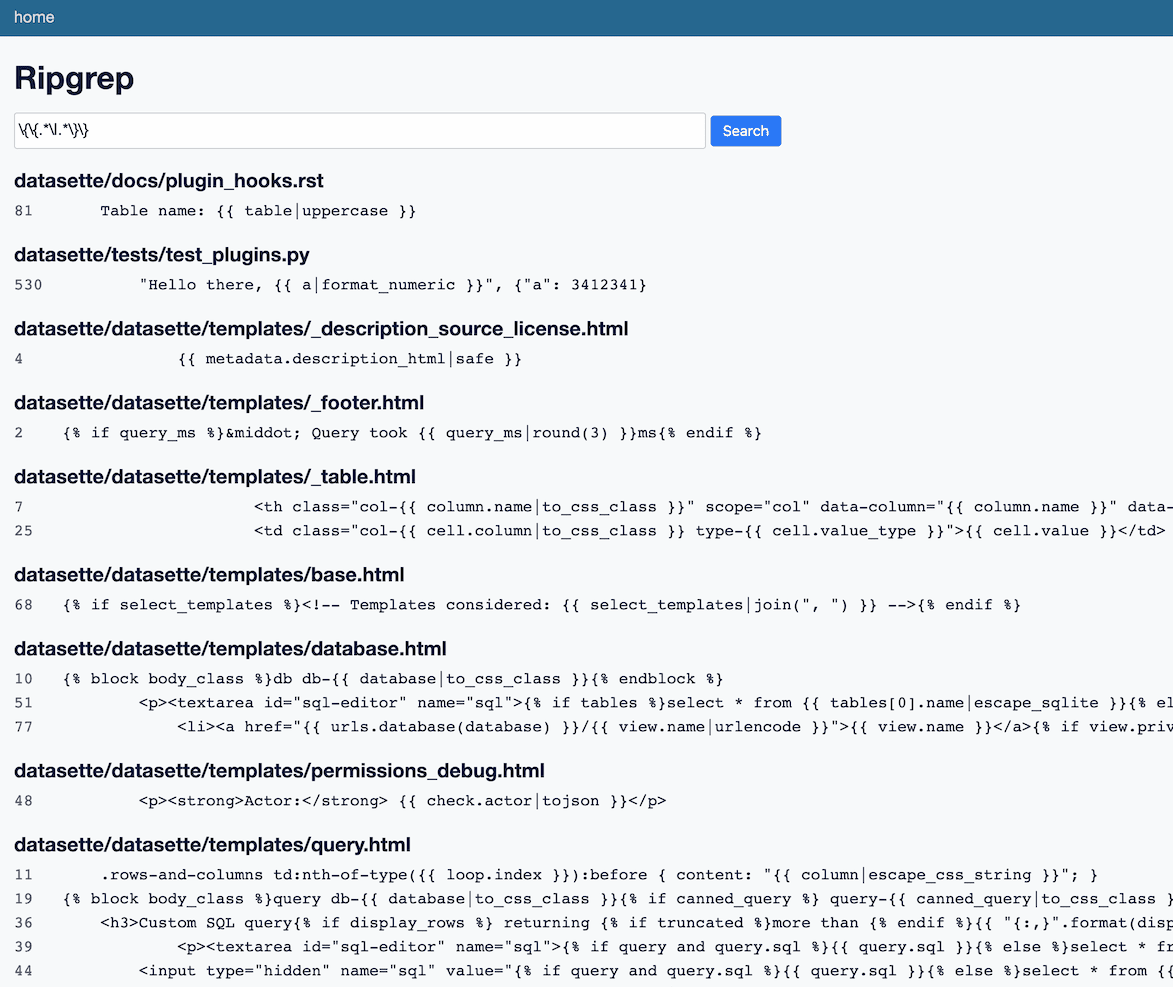39 items tagged “async”
2024
aiolimiter. I found myself wanting an asyncio rate limiter for Python today—so I could send POSTs to an API endpoint no more than once every 10 seconds. This library worked out really well—it has a very neat design and lets you set up rate limits for things like “no more than 50 items every 10 seconds”, implemented using the leaky bucket algorithm.
2023
Writing a chat application in Django 4.2 using async StreamingHttpResponse, Server-Sent Events and PostgreSQL LISTEN/NOTIFY (via) Excellent tutorial by Víðir Valberg Guðmundsson on implementing chat with server-sent events using the newly async-capable StreamingHttpResponse from Django 4.2x.
He uses PostgreSQL’a LISTEN/NOTIFY mechanism which can be used asynchronously in psycopg3—at the cost of a separate connection per user of the chat.
The article also covers how to use the Last-Event-ID header to implement reconnections in server-sent events, transmitting any events that may have been missed during the time that the connection was dropped.
Django 4.2 released. “This version has been designated as a long-term support (LTS) release, which means that security and data loss fixes will be applied for at least the next three years.” Some neat new async features, including improvements to async streaming responses.
2022
Why Rust’s postfix await syntax is good (via) C J Silverio explains postfix await in Rust—where you can write a line like this, with the ? causing any errors to be caught and turned into an error return from your function:
let count = fetch_all_animals().await?.filter_for_hedgehogs().len();
Weeknotes: Parallel SQL queries for Datasette, plus some middleware tricks
A promising new performance optimization for Datasette, plus new datasette-gzip and datasette-total-page-time plugins.
2021
PHP 8.1 release notes (via) PHP is gaining “Fibers” for lightweight cooperative concurrency—very similar to Python asyncio. Interestingly you don’t need to use separate syntax like “await fn()” to call them—calls to non-blocking functions are visually indistinguishable from calls to blocking functions. Considering how much additional library complexity has emerged in Python world from having these two different colours of functions it’s noteworthy that PHP has chosen to go in a different direction here.
Finding and reporting an asyncio bug in Python 3.10
I found a bug in Python 3.10 today! Some notes on how I found it and my process for handling it once I figured out what was going on.
[... 1,789 words]Introducing Partytown 🎉: Run Third-Party Scripts From a Web Worker (via) This is just spectacularly clever. Partytown is a 6KB JavaScript library that helps you move gnarly poorly performing third-party scripts out of your main page and into a web worker, so they won’t destroy your page performance. The really clever bit is in how it provides sandboxed access to the page DOM: it uses a devious trick where a proxy object provides getters and setters which then make blocking API calls to a separate service worker, using the mostly-forgotten xhr.open(..., false) parameter that turns off the async default for an XMLHttpRequest call.
Async functions require an event loop to run. Flask, as a WSGI application, uses one worker to handle one request/response cycle. When a request comes in to an async view, Flask will start an event loop in a thread, run the view function there, then return the result.
Each request still ties up one worker, even for async views. The upside is that you can run async code within a view, for example to make multiple concurrent database queries, HTTP requests to an external API, etc. However, the number of requests your application can handle at one time will remain the same.
New Major Versions Released! Flask 2.0, Werkzeug 2.0, Jinja 3.0, Click 8.0, ItsDangerous 2.0, and MarkupSafe 2.0. Huge set of releases from the Pallets team. Python 3.6+ required and comprehensive type annotations. Flask now supports async views, Jinja async templates (used extensively by Datasette) “no longer requires patching”, Click has a bunch of new code around shell tab completion, ItsDangerous supports key rotation and so much more.
unasync (via) Today I started wondering out loud if one could write code that takes an asyncio Python library and transforms it into the synchronous equivalent by using some regular expressions to strip out the “await ...” keywords and suchlike. Turns out that can indeed work, and Ratan Kulshreshtha built it! unasync uses the standard library tokenize module to run some transformations against an async library and spit out the sync version automatically. I’m now considering using this for sqlite-utils.
2020
datasette-ripgrep: deploy a regular expression search engine for your source code
This week I built datasette-ripgrep—a web application for running regular expression searches against source code, built on top of the amazing ripgrep command-line tool.
[... 1,362 words]Inevitably we got round to talking about async.
As much of an unneeded complication as it is for so many day-to-day use-cases, it’s important for Python because, if and when you do need the high throughput handling of these io-bound use-cases, you don’t want to have to switch language.
The same for Django: most of what you’re doing has no need of async but you don’t want to have to change web framework just because you need a sprinkling of non-blocking IO.
The “await me maybe” pattern for Python asyncio
I’ve identified a pattern for handling potentially-asynchronous callback functions in Python which I’m calling the “await me maybe” pattern. It works by letting you return a value, a callable function that returns a value OR an awaitable function that returns that value.
[... 787 words]Waiting in asyncio. Handy cheatsheet explaining the differences between asyncio.gather(), asyncio.wait_for(), asyncio.as_completed() and asyncio.wait() by Hynek Schlawack.
Django: Added support for asynchronous views and middleware (via) An enormously consequential feature just landed in Django, and is set to ship as part of Django 3.1 in August. Asynchronous views will allow Django applications to define views using “async def myview(request)”—taking full advantage of Python’s growing asyncio ecosystem and providing enormous performance improvements for Django sites that do things like hitting APIs over HTTP. Andrew has been puzzling over this for ages and it’s really exciting to see it land in a form that should be usable in a stable Django release in just a few months.
Async Support—HTTPX (via) HTTPX is the new async-friendly HTTP library for Python spearheaded by Tom Christie. It works in both async and non-async mode with an API very similar to requests. The async support is particularly interesting—it’s a really clean API, and now that Jupyter supports top-level await you can run ’(await httpx.AsyncClient().get(url)).text’ directly in a cell and get back the response. Most excitingly the library lets you pass an ASGI app directly to the client and then perform requests against it—ideal for unit tests.
2019
... the overall conclusion I reach is that we have so much to gain from making Django async-capable that it is worth the large amount of work it will take. I also believe, crucially, that we can undertake this change in an iterative, community-driven way that does not rely solely on one or two long-time contributors burning themselves out.
2018
The ASGI specification provides an opportunity for Python to hit a productivity/performance sweet-spot for a wide range of use-cases, from writing high-volume proxy servers through to bringing large-scale web applications to market at speed.
Changelog 2018-06-12 / Observable. The ability to download an Observable notebook as a stand-alone ES module and run it anywhere using their open source runtime is fascinating, but it’s also worth reading the changelog for some of the new clever tricks they are pulling using await—“await visibility();” in a notebook cell will cause execution to pause until the cell scrolls into view for example.
Touring a Fast, Safe, and Complete(ish) Web Service in Rust. Brandur’s notes from building a high performance web service in Rust, using PostgreSQL via the Diesel ORM and the Rust actix-web framework which provides Erlang-style actors and promise-based async concurrency.
Trio Tutorial. Trio is a really nice async library for Python—a simpler alternative to asyncio, with some very clean API design. Best of all, the tutorial is fantastic—it provides a very clear explanation of async/await without diving into the intricacies of coroutines.
Python & Async Simplified. Andrew Godwin: “Python’s async framework is actually relatively simple when you treat it at face value, but a lot of tutorials and documentation discuss it in minute implementation detail, so I wanted to make a higher-level overview that deliberately ignores some of the small facts and focuses on the practicalities of writing projects that mix both kinds of code.” This is really useful: clearly explains the two separate worlds of Python (sync and async functions) and describes Andrew’s clever sync_to_async and async_to_sync decorators as well.
asgiref: AsyncToSync and SyncToAsync (via) Andrew’s classes in asgiref that can turn a synchronous callable into an awaitable (that runs in a thread pool) or an awaitable callable into a synchronous callable, using Python 3 futures and asyncio.
Channels 2.0. Andrew just shipped Channels 2.0—a major rewrite and redesign of the Channels project he started back in 2014. Channels brings async to Django, providing a logical, standardized way of supporting things like WebSockets and asynchronous execution on top of a Django application. Previously it required you to run a separate Twisted server and redis/RabbitMQ queue, but thanks to Python 3 async everything can now be deployed as a single process. And the new ASGI spec means its turtles all the way down! Everything from URL routing to view functions to middleware can be composed together using the same ASGI interface.
2017
Deploying an asynchronous Python microservice with Sanic and Zeit Now
Back in 2008 Natalie Downe and I deployed what today we would call a microservice: json-head, a tiny Google App Engine app that allowed you to make an HTTP head request against a URL and get back the HTTP headers as JSON. One of our initial use-scase for this was Natalie’s addSizes.js, an unobtrusive jQuery script that could annotate links to PDFs and other large files with their corresponding file size pulled from the Content-Length header. Another potential use-case is detecting broken links, since the API can be used to spot 404 status codes (as in this example).
Sanic. “Sanic is a Flask-like Python 3.5+ web server that’s written to go fast [...] On top of being Flask-like, Sanic supports async request handlers. This means you can use the new shiny async/await syntax from Python 3.5, making your code non-blocking and speedy”.
uvloop: Blazing fast Python networking. “uvloop makes asyncio fast. In fact, it is at least 2x faster than nodejs, gevent, as well as any other Python asynchronous framework. The performance of uvloop-based asyncio is close to that of Go programs.”
2010
DNode: Asynchronous Remote Method Invocation for Node.js and the Browser. Mind-bendingly clever. DNode lets you expose a JavaScript function so that it can be called from another machine using a simple JSON-based network protocol. That’s relatively straight-forward... but DNode is designed for asynchronous environments, and so also lets you pass callback functions which will be translated in to references and used to make remote method invocations back to your original client. And to top it off, there’s a browser client library so you can perform the same trick over a WebSocket between a browser and a server.
Mongrel2 is “Self-Hosting”. Zed Shaw’s Mongrel2 is shaping up to be a really interesting project. “A web server simply written in C that loves all languages equally”, the two most interesting new ideas are the ability to handle HTTP, Flash Sockets and WebSockets all on the same port (thanks to an extension to the Mongrel HTTP parser that can identify all three protocols) and the ability to hook Mongrel2 up to the backend servers using either TCP/IP or ZeroMQ. I’m guessing this means Mongrel2 could hold an HTTP request open, fire off some messages and wait for various backends to send messages back to construct the response, making async processing just as easy as a regular blocking request/response cycle.

